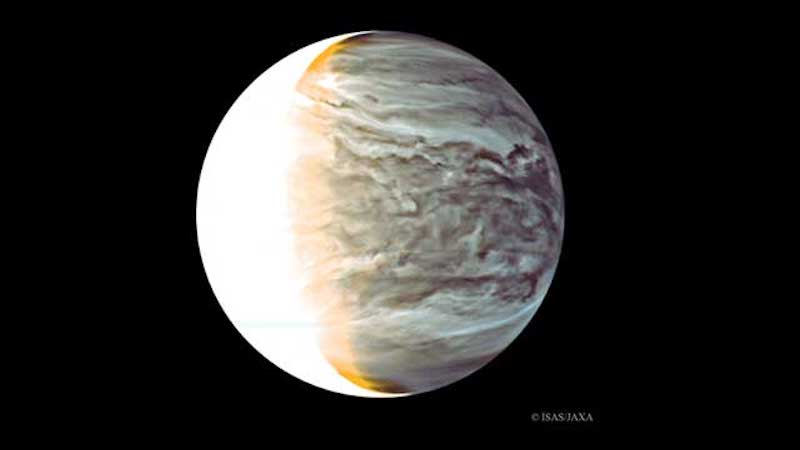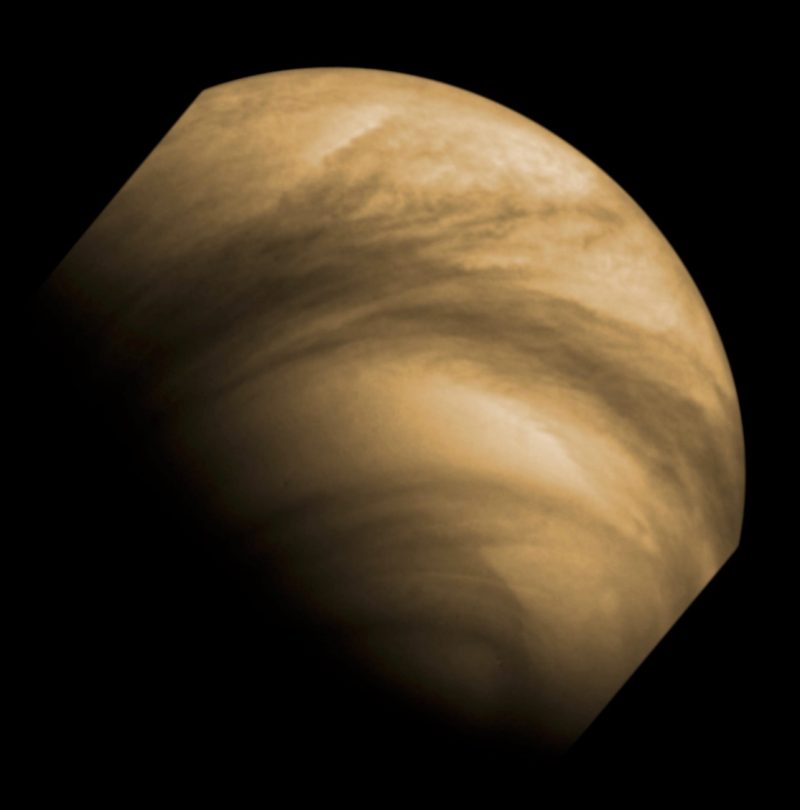
Is there life on Venus? That might sound like an odd, even absurd, question, given the extremely hostile conditions on the planet’s surface. After all, on Venus, it’s hot enough to melt lead. But, as we were reminded last year with the discovery of phosphine, there’s still the potential for microbial life in Venus’ atmosphere. Although the clouds are very acidic, temperatures and pressures become Earth-like at mid-altitudes. Now, a new study announced by researchers at CalPolyPomona in California shows that Earth-like photosynthesis in Venus’ atmosphere is possible.
Biochemist Rakesh Mogul at CalPolyPomona led the tantalizing new peer-reviewed study, which was published in Astrobiology on September 27, 2021.
Photosynthesis in Venus’ atmosphere could support life
In essence, the study supports the possibility of phototropism – the growth of organisms in response to light – in Venus’ atmosphere. The paper reports that:
We present photophysical and chemical arguments for the potential of phototrophy in Venus’ clouds or the harnessing of light for metabolic purposes.
According to the new research, Venus’ clouds could support phototrophs, organisms that use sunlight as a primary energy source. That process is what we know as photosynthesis. In fact, photosynthesis could occur year-round in the lower and middle cloud layers, according to the researchers.
As above, so below
In addition, the study found that photosynthesis could continue through the night due to thermal or infrared energy originating from the surface and the atmosphere. In that scenario, energy from sunlight would be available to microorganisms both above and below the clouds. These conditions would be ideal for the microorganisms to grow and diversify.
Also, the solar and thermal radiation in the clouds can be absorbed by the kinds of photosynthetic pigments that are found right here on Earth.

Less deadly ultraviolet light
Not only is photosynthesis possible in Venus’ clouds, it turns out there is also much less ultraviolet radiation (UV) in the middle and lower cloud layers. As compared to Earth’s surface, there is 80-90 percent less UV-A and virtually no UV-B or UV-C. Co-author Yeon Joo Lee at Technische Universitat Berlin used a radiative transfer model to make this discovery. This creates an almost radiation-free zone in the same part of the atmosphere where temperatures and pressures are also more Earth-like.
Photosynthesis at night?
Just how well suited is Venus’ atmosphere for photosynthesis occurring at night? The researchers compared photon fluxes from Venus’ hot atmosphere and surface to photon fluxes measured within low-light phototrophic habitats on Earth. These habitats are the hydrothermal vents in the East Pacific Rise, where geothermal emissions can support phototrophy to depths of 7,874 feet (2400 meters), and the Black Sea, where solar powered phototrophs exist at depths of 394 feet (120 meters).
The result was that the photon fluxes on Venus exceeded those from the dark earthly environments.
What about water?
Venus’ atmosphere is very dry, even in the temperate zone. Another recent study suggests that it is too dry to support any microbial life. But Mogul and his colleagues disagree with that assessment. They found that the chemical conditions of Venus’ clouds may be partly composed of neutralized forms of sulfuric acid, like ammonium bisulfate.
If so, they would exhibit much higher water content as compared to the calculations from the previous study. They would also be less acidic than current models of Venus suggest.

A habitable world?
Overall, the results of the new study paint a picture of Venus’ atmosphere that is more habitable than many scientists have thought. As Mogul commented:
Our study provides tangible support for the potential for phototrophy and/or chemotrophy by microorganisms in Venus’ clouds. The acidity and water activity levels potentially fall within an acceptable range for microbial growth on Earth, while the constant illumination with limited UV suggests that Venus’ clouds could be hospitable for life. We believe that Venus’ clouds would make a great target for habitability or life detection missions, like those currently planned for Mars and Europa.
The mystery of the ‘unknown absorbers’
A long-standing mystery of Venus is the presence of unusual dark streak-like patches in the atmosphere. These patches still haven’t been explained. They are also called the “unknown absorbers” since they absorb ultraviolet light. Their exact composition is still unknown, although they do contain sulfur, and previous studies have shown that the particles in the patches are about the same size as earthly bacteria.
The patches are episodic, lasting for days and changing their shape and contrast. They have contrasts up to 30–40 percent in the ultraviolet, and are muted in longer wavelengths.
Could these possibly be the phototrophs? It’s still too soon to know, but some scientists have theorized that these patches are composed of microbes, similar to algal blooms in lakes and oceans on Earth. You can read the 2018 study about this in Astrobiology.

Bottom line: Photosynthesis in Venus’ atmosphere may be possible, according to a new study. The findings support the idea that microbes could exist and even thrive in the more temperate regions of the planet’s cloud layers.











